As was foretold, we've added advertisements to the forums! If you have questions, or if you encounter any bugs, please visit this thread: https://forums.penny-arcade.com/discussion/240191/forum-advertisement-faq-and-reports-thread/
Options
Pyrian's Watercolors
Pyrian Registered User regular
Registered User regular
 Registered User regular
Registered User regular
I'm working on some watercolor art for a personal game project (which per forum policy will go unnamed for now), slowly replacing the digital "programmer art" it had before. There's a sort of random overmap in which each site you can visit has a terrain type, represented with a little picture. Here's what it looked like originally:

Here's my physical paintings:

And here they are, in-game:

This is a bit zoomed in so you can see closer to what part of it might look like full screen:

So... Does this work? Better, worse, something else? Any tips or criticisms, things I could maybe fix? Feedback is always appreciated!

Here's my physical paintings:

And here they are, in-game:

This is a bit zoomed in so you can see closer to what part of it might look like full screen:

So... Does this work? Better, worse, something else? Any tips or criticisms, things I could maybe fix? Feedback is always appreciated!
+1
Posts
Try to consider the brightness of the colors you're using...when you're creating small icons like this, clear silhouettes and forms are VERY important. When you change these over to greyscale, they're a bit hard to understand.
I actually think the "programmer art" is easier to read, for a few reasons. The icons there are very distinct from one another, and have clear silhouettes. In your version, you've removed the silhouettes entirely by placing all the scenes in square frames. Many of your paintings also show extremely similar scenes (i.e. a brown road in the center of the image, with the sky covering the top 1/4).
I'm a bit confused by the yellow "S" shape and the other additions from the in-game screenshot...it looks a little messy? You can create watercolor art for a game and have it look fantastic, but it does require some finesse. Watercolor like this looks rather loose, which is fine, but if everything looks loose, it can look messy.
Maybe try planning out and drawing some distinct, simple silhouettes for each terrain, and consider using some different colors per slot, too. Different greens, different shapes, etc. Anything that would help each area seem unique and immediately recognizable from its icon on this page.
Did you revisit the overmap icons after reading ND's input? I agree with everything she said, as far them being kind of unclear. The original icons are much more different from each other, even just simply because one depicts a plant while another depicts a rock and another a liquid, etc. Since the space you have to work with for each one is so small, you might have more success simplifying what's in each icon quite a bit (especially by cutting down the backgrounds). Two pine trees, two crop plants, a rock pile, etc. More contrast and making use of silhouettes, trying these things would be a good idea.
Looking forward to seeing more! Watercolor in a game is so nice.
facebook.com/LauraCatherwoodArt
I took three different tries at making low brush sets, and combined them in a single tile. Now it works much better! Also, I've painted big/high bushes. Low brush slows movement and can be hidden in with the stealth skill. High bushes also block line of sight.
I tried coloring the different types of rocks. I have mixed feelings about the result. They certainly "pop" better, but they were IMO pretty distinguishable before. I don't really like the look as much. Might try a different set of colors. In gameplay, the low gravel slows movement, the medium boulders also can be hidden in with stealth skill, while the big ol' rocks are impassable and block line of sight.
facebook.com/LauraCatherwoodArt
Here's the raw paintings:
And here they are in-game:
Here's a section in the game as-is:
In this approach, border hexes get some bits of rock or grass from adjacent hexes all throughout the hex. The direction of adjacency is ignored:
Here, the approach is similar but the direction of adjacency is taken into account:
Finally, in this prototype, we're smoothing out the corners when two hexes are the same but the third is different, reducing the jaggedness of "straight" lines:
I would really appreciate any opinions on which approaches you think work best! Thanks.
Maybe do a bool and randomize it to have it switch back and forth (favor adjacency though), which will help keep the variation high and break up the blockiness a bit more.
Before:
After:
Before:
These are the actual paintings; top row is the edging, the triangles are used in the corners:
After: